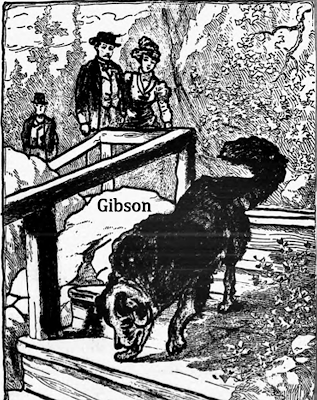In the vault at the Montour Falls Library is an old photo of a monument
that has been a mystery for a long time.
The monument is a Civil War monument called “The Citizen-Soldier,”
dedicated to the men of Montour Falls who served in the war. Written below the photo is a note that says
this was a monument at Gettysburg. The
problem is—there is no such monument at Gettysburg. So where was the monument? As I researched this further I discovered
that the monument was intended to be placed in a park to be created in Montour
Falls in front of the waterfall, but it never arrived. The reason was that its donor, Halsey Ives, a
distinguished citizen from Montour Falls, who helped form and lead the St.
Louis Art Museum in Missouri, suddenly died in 1911, and his estate did not
leave enough money to ship the statue to Montour Falls.
Ives had commissioned a well-known sculptor named George Julian Zolnay
to create the statue. Zolnay, known as
the “sculptor of the Confederacy” for the many Confederate monuments he made,
used some rather unusual license in making the monument. At the top of the monument can be seen the
bust of a man. Incredibly, when I began
investigating other works by Zolnay, I recognized a similarity with another
statue. Zolnay’s statue in Nashville,
Tennessee dedicated to Sam Davis, a Confederate hero executed as a spy by Union
forces, has the same head as the statue Zolnay planned for Montour Falls. Zolnay put the bust of a Confederate hero on
top of a monument intended to celebrate Union soldiers from Montour Falls!
The monument never made it to Montour Falls, but it did exist at one
point as attested by the photograph. The
monument was subsequently dismantled.
The bust of the man still exists in the archives of the St. Louis Art
Museum. When I contacted them they
showed me a picture of it, and it was simply labeled as “the head of a
man.” What happened to the rest of the
statue is unknown. I can only wonder
that if Ives had lived longer and the statue had been shipped, what would have
happened when the citizens of Montour Falls discovered that their statue
memorializing their Union patriots was topped by a Confederate hero? Zolnay’s deceit would have been—busted.
(left click on the photo above to see a larger image)
(left click on the photo above to see a larger image)

